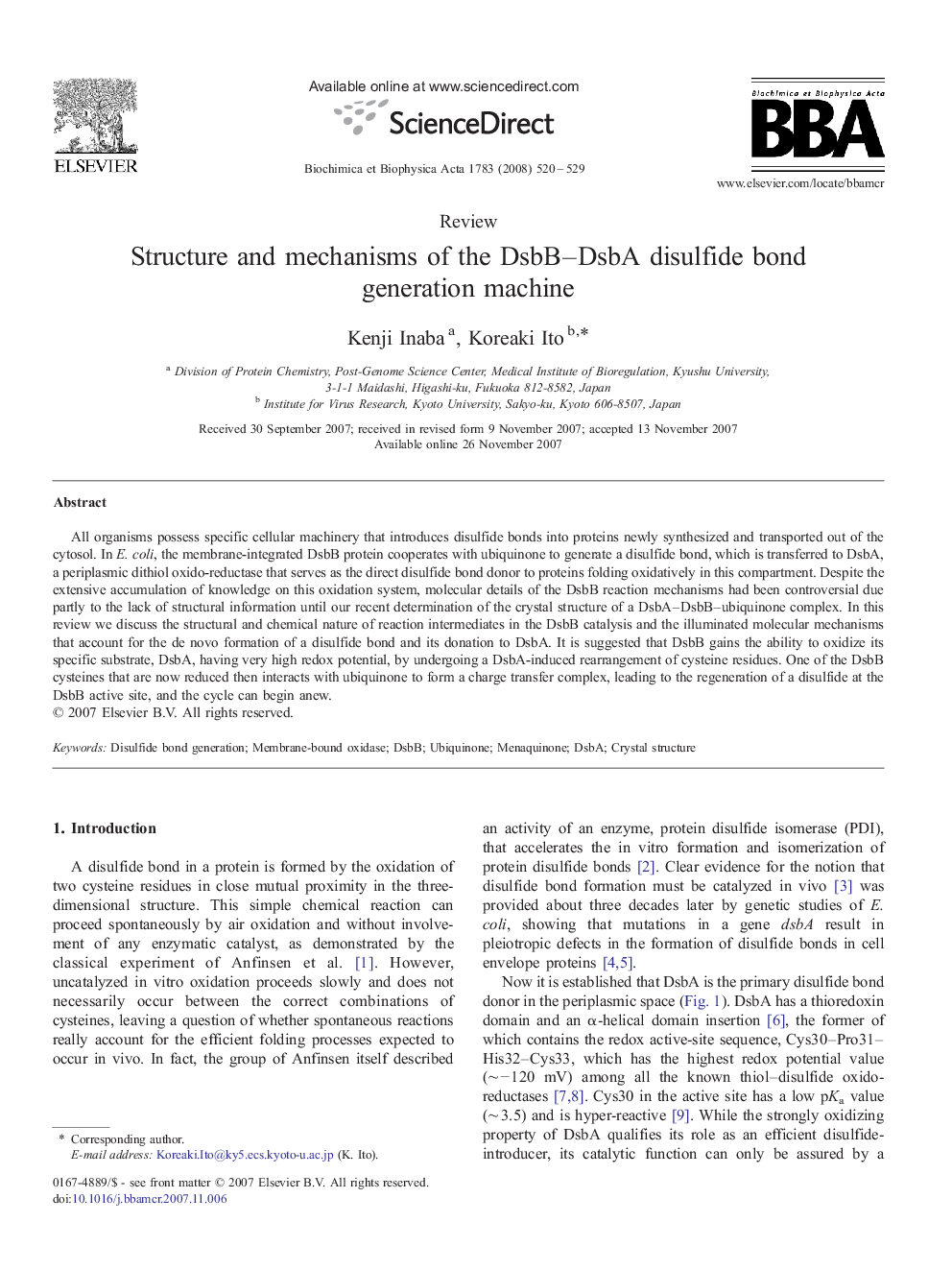| کد مقاله | کد نشریه | سال انتشار | مقاله انگلیسی | نسخه تمام متن |
|---|---|---|---|---|
| 1951312 | 1055755 | 2008 | 10 صفحه PDF | دانلود رایگان |

All organisms possess specific cellular machinery that introduces disulfide bonds into proteins newly synthesized and transported out of the cytosol. In E. coli, the membrane-integrated DsbB protein cooperates with ubiquinone to generate a disulfide bond, which is transferred to DsbA, a periplasmic dithiol oxido-reductase that serves as the direct disulfide bond donor to proteins folding oxidatively in this compartment. Despite the extensive accumulation of knowledge on this oxidation system, molecular details of the DsbB reaction mechanisms had been controversial due partly to the lack of structural information until our recent determination of the crystal structure of a DsbA–DsbB–ubiquinone complex. In this review we discuss the structural and chemical nature of reaction intermediates in the DsbB catalysis and the illuminated molecular mechanisms that account for the de novo formation of a disulfide bond and its donation to DsbA. It is suggested that DsbB gains the ability to oxidize its specific substrate, DsbA, having very high redox potential, by undergoing a DsbA-induced rearrangement of cysteine residues. One of the DsbB cysteines that are now reduced then interacts with ubiquinone to form a charge transfer complex, leading to the regeneration of a disulfide at the DsbB active site, and the cycle can begin anew.
Journal: Biochimica et Biophysica Acta (BBA) - Molecular Cell Research - Volume 1783, Issue 4, April 2008, Pages 520–529